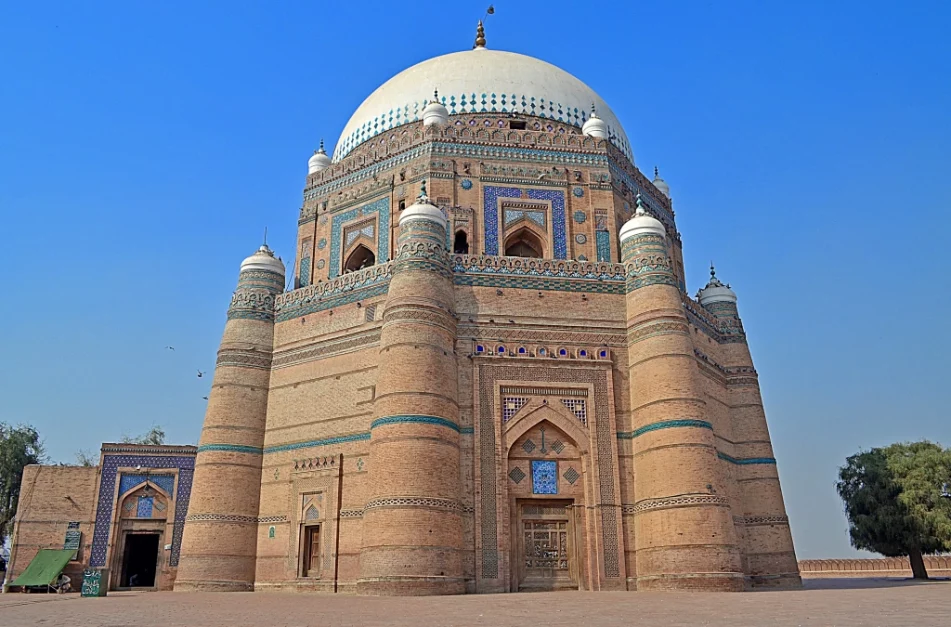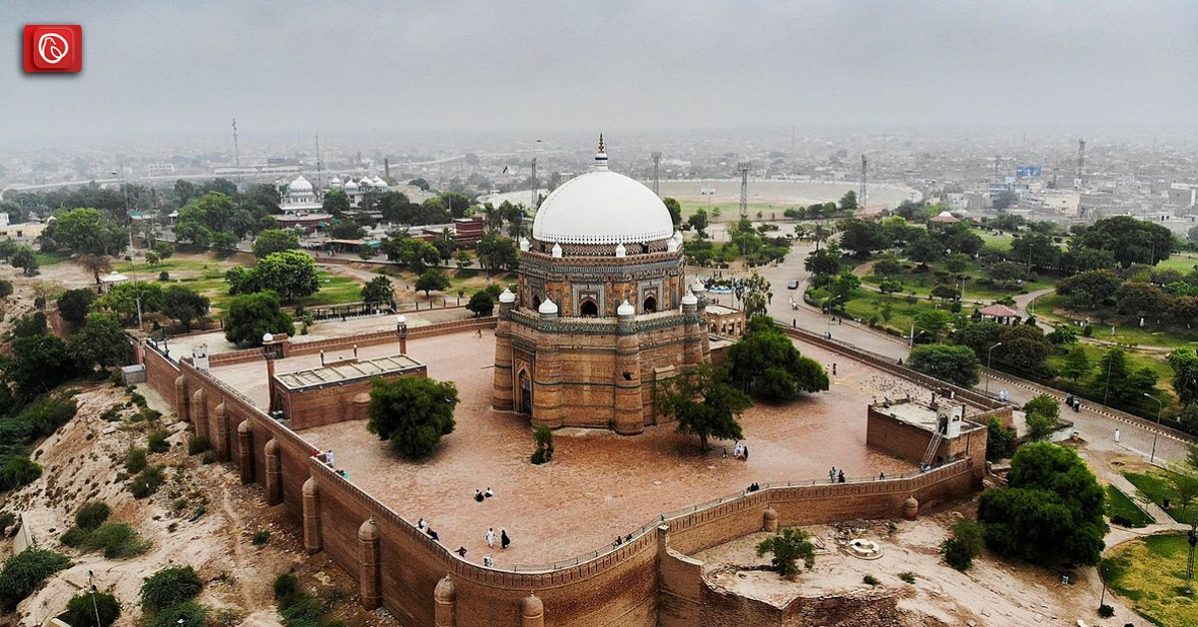Shah Rukne Alam, an iconic figure in the annals of Islamic history, is revered as a saint and spiritual guide in the region of Multan, Pakistan. His magnificent shrine continues to draw countless devotees and curious visitors, which is a testament to his profound influence.
Graana.com delves into the captivating narrative surrounding this shrine, exploring its historical significance, miraculous legends, and the enduring spirit of devotion it embodies.
A Glimpse into History
During the 14th century, Multan was a flourishing centre of Islamic civilisation, and it was in this vibrant city that Shah Rukne Alam lived and preached his message of love, compassion, and devotion. Born in 1251 CE, he hailed from a noble lineage of spiritual leaders and quickly gained a reputation for his wisdom and piety.
An Architectural Marvel

The construction of the shrine was initiated by Tughluq Sultan, the ruler of Delhi at the time, as a tribute to Shah Rukne Alam’s esteemed spiritual status. The Sultan recognised the profound impact the saint had on the people of Multan, and sought to honour his legacy by erecting a shrine that would serve as a focal point for devotion and pilgrimage.
It exemplifies a fusion of Islamic and Indo-Islamic architectural styles. Its grandeur lies in its octagonal shape, towering minarets, and exquisite ornamentation. The exterior of the tomb features intricate tile work, while the interior showcases frescoes and calligraphic masterpieces.
The tomb structure has an octagonal shape, with an internal diameter of 51 feet and 9 inches. Its walls stand at a height of 41 feet and 4 inches and are 13 feet and 3 inches thick. Above it rests a smaller octagon measuring 25 feet and 8 inches externally, reaching a height of 26 feet and 10 inches. Constructed entirely using red bricks and reinforced with sheesham wood beams, the shrine showcases exquisite craftsmanship that has endured the test of time.
Intricate glazed tile panels, string-courses, and battlements adorn the exterior, showcasing a captivating colour palette of dark blue, azure, and white. These hues create a beautiful contrast with the deep red tone of the polished bricks.
Historical accounts state that Ghias-ud-Din Tughlak commissioned the tomb for his own use during his governorship of Depalpur, between 1320 and 1324 AD. However, his son, Muhammad bin Tughluq, later bequeathed it to the descendants of Shah Rukne Alam for the burial of the revered saint in 1330.
Legends of Shah Rukne Alam: Tales of Miracles and Devotion
The spiritual significance of the shrine is further enriched by the countless tales of miracles associated with the saint himself.
Miraculous Healing Powers
Countless individuals suffering from ailments, both physical and spiritual, are said to have sought solace at the shrine and experienced miraculous recoveries.
Protection From Calamities
Another legend tells the tale of how Shah Rukne Alam protects the city of Multan from calamities and disasters. Locals attribute the relative safety of the region from natural catastrophes to his benevolent blessings.
A Beacon of Hope
The shrine serves as a beacon of hope for individuals seeking solace and guidance in their lives. Its tranquil ambiance and the air of spirituality that permeates the surroundings create an atmosphere conducive to introspection and inner peace.
Frequently Asked Questions
Following are some of the most frequently asked questions regarding Shah Rukne Alam:
Who was Shah Rukne Alam?
He was a renowned Sufi saint who lived during the 14th century. He was a member of the Qadiriyya Sufi order and gained renown for his piety, wisdom, and spiritual teachings.
What is the historic significance of the shrine?
The shrine serves as a place of pilgrimage for followers of Sufism and Islam, and its construction aims to honour the revered saint and provide a space for devotees to pay their respects.
What architectural style is the shrine built in?
The shrine showcases a magnificent blend of Islamic and Indo-Islamic architectural styles. Its octagonal shape, towering minarets, intricate tile work, frescoes, and calligraphic artistry make it an architectural marvel.
Are there any miracles associated with Shah Rukne Alam?
Yes, numerous legends tell of miraculous events attributed to him. People believe in his healing powers and seek solace at the shrine, where many have reported experiencing miraculous recoveries from physical and spiritual ailments.
Can anyone visit the Shah Rukne Alam shrine?
Yes, the shrine is open to all visitors, regardless of their religious beliefs. People from various backgrounds and faiths visit the shrine to witness its beauty, seek spiritual solace, or learn about the rich history and traditions associated with it.
How can one reach the Shah Rukne Alam shrine?
The shrine is located in Multan, Pakistan. People can reach there by air, road, or rail, as it has well-connected to the major cities. They can also use local transportation options, such as taxis or rickshaws. It stands as a testament to the enduring spirit of faith and devotion.
Its awe-inspiring architecture, rich history, and tales of miracles continue to captivate the hearts of those who visit. Whether seeking solace, witnessing architectural grandeur, or exploring the spiritual heritage of Sufism, the shrine offers a profound experience to all who enter its sacred space.
For more information, visit Graana.com.




